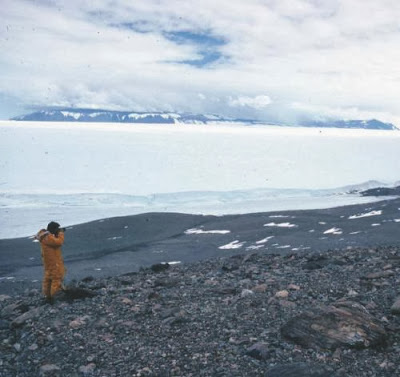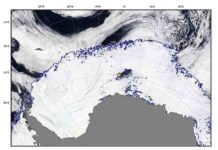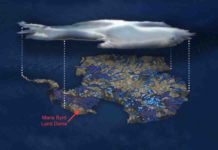
Australian geologists on Tuesday opened up the tantalising but controversial prospect that Antarctica could be rich in diamonds.
In a scientific paper published in the journal Nature Communications, a team said they had found a telltale rock called kimberlite in the Prince Charles Mountains in East Antarctica.
No diamonds were found in the samples, taken from Mount Meredith, and the study—focusing only on the region’s geology, not on mining possibilities—was not designed to quantify how many could be there.
But, it said, the mineral’s signature is identical to that in other locations in the world where diamonds have been found.
“The samples are texturally, mineralogically and geochemically typical of Group 1 kimberlites from more classical localities,” said the probe, led by Greg Yaxley at the Australian National University in Canberra.
Kimberlite, a rock that is rarely found near Earth’s surface, is believed to be formed at great depths in the mantle, where conditions are right for forming diamonds—carbon atoms that are squeezed into lattice shapes under extreme pressure and temperature.
The study suggested kimberlite was thrust towards the surface around 120 million years ago, when present-day Africa, the Arabian peninsula, South America, the Indian sub-continent, Australia and Antarctica were glommed together in a super-continent called Gondwana.
Outcrops of kimberlite studded the centre of Gondwana at this time.
The component continents then drifted apart, which explains why diamonds have been found in such diverse and distant locations, from Brazil to southern Africa and India, according to this theory.
Mining banned – for now
Independent experts were divided as to whether the discovery could unleash a diamond rush that would ravage the world’s last pristine continent.
A treaty protecting Antarctica was signed in 1961 and was updated with an environmental protocol in 1991 whose Article 7 expressly prohibits “any activity relating to mineral resources.”
The 1991 pact comes up for review in 2048, 50 years after it came into effect following ratification. It has been ratified by 35 nations.
Robert Larter, a geophysicist with the British Antarctic Survey (BAS), said “the default assumption” was that the protocol will continue.
“Any change would require agreement of the majority of parties at a review conference, including three-quarters of the states which were Antarctic Treaty Consultative Parties at the time of adoption of the protocol,” he said in comments to Britain’s Science Media Centre.
Teal Riley, a BAS survey geologist, said the discovery of kimberlite was “not unsurprising” given that the local geology in East Antarctica has a feature called cratons, a telltale of this rock.
“However, even amongst the Group 1 kimberlites, only 10 percent or so are economically viable, so it’s still a big step to extrapolate this latest finding with any diamond mining activity in Antarctica,” where extraction would be tougher and costlier.
But Kevin Hughes, a senior officer at an international panel called the Scientific Committee on Antarctic Research (SCAR), was more cautious.
More than three decades from now, “we do not know what the treaty parties’ views will be on mining… or what technologies might exist that could make extraction of Antarctic minerals economically viable,” he said.
“An additional issue is that nations outside the protocol are not bound by its provisions, including the ban on mineral resource activities.”
Kimberlite takes its name from the town of Kimberley, in South Africa, which was created by a diamond rush.
In 1871, a cook found a huge stone while digging on a farm, and within a year 50,000 prospectors were there, digging feverishly and living in a makeshift tented city.










